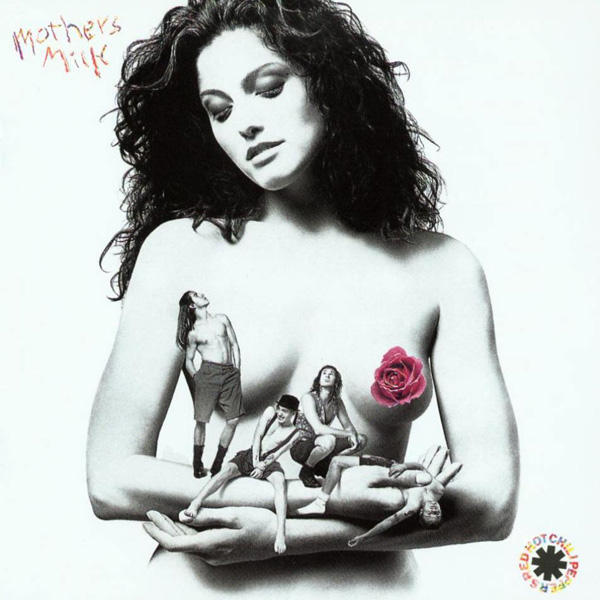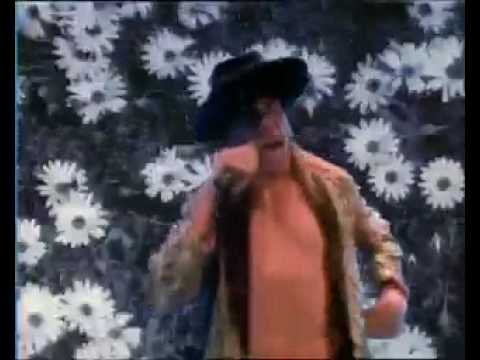"I’m forever near a stereo saying, ‘What the fuck is this garbage?’ And the answer is always the Red Hot Chili Peppers." – Nick Cave
When I was a teenager the Red Hot Chili Peppers rocked my world. That’s right, those bozos, those wise guys, those hilarious jocks with their socks on their cocks. They were specimens of alpha maleness and the epitome of urbanity, or so I thought, though to be fair I did come from Cornwall, an enclave of Britain that embraces music made by beanie-hatted, hard-jawed aftershave models who’re as comfortable with a guitar under their arm as they are a surfboard or boogieboard; men – and it really is always men – who only function properly when they’re showing off with a plank of wood on the beach.
If I sound like I’m on the defensive already it’s because I am. I find my patronage of these miscreants back then – even at such a tender age – every bit as embarrassing as the time I claimed in print that Joey Burns and John Convertino of Calexico had been hanging out with Victor Jara, a Chilean revolutionary reposing since 1973, and almost as cringe-inducing as the period towards the end of my drinking when I used to email 80s keyboard wizard Howard Jones asking for life advice. Nevertheless, from the vantagepoint of the present it’s easy to cast stones, whereas in 1989 to a sapling like me, the Chili Peppers were cultish enough and cartoonish enough and definitely cocky enough to warrant adulation.
They had a lot in common with my other great loves at the time, the Teenage Mutant Ninja Turtles. Compare the two and the similarities are startling. Both were muscle bound cult heroes with four words in their title led by a rat with ninja powers, and both emerged from the L.A. underground (the Turtles were very underground, coming from a sewer) within a year of each other. TMNT peaked earlier, going mainstream in 1989, unleashing ‘cowabunga’ unto the planet and ensuring its safe passage into the modern lexicon. RHCP may not have been named after Italian renaissance painters but they certainly admired the female form, and waxed lyrical about it on tracks like ‘Californication’ (an icky portmanteau they thrust unto the world also). It was just a shame when singing about women that they often forgot there was a person attached to the body they were eulogising over. There would be no room for a token April O’Neil type figure in their gang as they’d no doubt get distracted as they competed to get into her yellow jumpsuit. Anyway, the Turtles went overground in a big way in ’89, while the Chili Peppers would have to wait until 1991 to go from cult concern to international playboys.
When Mother’s Milk arrived they were no bigger and no less inaccessible than, say, their friends the Butthole Surfers, or even San Franciscan fellow funk punkers Faith No More, who also ended up playing stadiums. Remember that around this time it was that other circus of west coast freaks, Jane’s Addiction, who were bigger than any of the aforementioned, though the idea that any of them would become international household names would have been considered risible, unless you were on lots of drugs, which of course they all were (except maybe Mike Patton).
There was something comical and amateurish and even lovable about these muscular misfits in particular, and given that their drummer had walked out and their guitarist – Hillel Slovak – had died of a heroin overdose the year previous, meant they were underdogs too. Mother’s Milk would be the last album they recorded for EMI, and how that label must have rued the fact that they had world beaters on their roster and knew not how to get the best out of them. Or so you’d think, though in 1989 nobody could have expected this party band with a bass player who called himself Flea to become the Atlantic-straddling, venerated MTV generation musical equivalent of syphilis that they’d soon become.
There are hints on Mother’s Milk of course; the rampant and rambunctious singalong chorus of ‘Taste The Pain’, the well-executed Stevie Wonder ‘Higher Ground’ cover, and in particular ‘Knock Me Down’, their hymn to Hillel that somehow channels Jimi Hendrix’s ’51st Anniversary’ and Roachford’s ‘Cuddly Toy’ at the same time. The guitar riff is bewitching, and as great a guitarist as Slovak was, John Frusciante brought an added dimension in nuanced excellence that they’ve missed since he departed in ’92 (he came back again at the end of the ’90s after rehab, but that doesn’t count), with their ever diminishing matrioskas of the axe each more pliable and less equipped to compete with Flea’s indomitable Seinfeld slap, his megalomania knowing no bounds these days. On ‘Knock Me Down’ they even threw in some key changes and some Heaven 17-like gospel wailing to prove they really meant business, and the single became their second minor hit following 1987’s ‘Fight Like A Brave’.
It was telling at the time that their career-encompassing compilation that fulfilled their contract with EMI in 1992 was called What Hits?! It wasn’t ironic, there hadn’t really been any. Warners obviously saw something in them, and it was their new label’s masterstroke to hook the band up with Rick Rubin, a man Anthony Kiedis had thought "was the devil" until they worked together on Blood Sugar Sex Magik. Rubin’s regenerative properties are always mentioned where Johnny Cash’s career is concerned – and quite rightly too – though it was his lean, transformative, no nonsense intervention that almost undoubtedly propelled the Red Hot Chili Peppers to mega stardom, and 80 million record sales later you have to say that in matchmaking terms that’s as shrewd and crafty as those rare zoos that actually get pandas fucking.
Rubin streamlined their goonish funk, cut back on the distorted riffs and made the whole sound more throbbing and sexually provocative, he introduced them to dynamics and the graphic equaliser, he threw out the Extreme-isms (a group who extricated everything terrible about RHCP and used just those bits amplified x100), he turned their bad white boy rapping into something more akin to genuine hip hop, making a track like ‘Give It Away’ as droppable in an urban DJ set as down the indie disco, and he also presided over ‘Under The Bridge’, their breakthrough megahit which was helped no end by heavy rotation on MTV. However, the success of Blood Sugar… would see them go onto eschew so much of what made them charming in the first place on later albums, like the double yawnathon that is Stadium Arcadium, as they went climbing for dollars and FM radio ubiquity, though even before that they’d blotted their copybook irreparably with their 1996 cover of the Ohio Players’ ‘Love Rollercoaster’, the nadir of western civilisation as we know it. But we’re getting ahead of ourselves.
Back in 1989 then, and the rap and the funk and the metal together sounded fresh and innovative whether you liked it or not, a fact that’s hard to countenance now given that these pioneering bands inadvertently spawned nu metal, and nightmarishly begat Fred Durst. There’d not been that much in the way of crossovers between rock and rap at that time either, with Aerosmith and Run DMC’s ‘Walk This Way’ the most famous example by far. And so for me, firstly Faith No More and then secondly the Red Hot Chili Peppers, really stood out from the Poisons and the Thunders and the Slaughters and whatever other priapic, single-syllabled, hair lacquered anachronisms I was staring drunkenly at on the telly at 4am on a Friday night while also gawking confusedly at Phil Alexander. The Real Thing and Mother’s Milk took over my turntable, the first was catchy and brattish and full of surprises, and in the latter I enjoyed the rush of new wave punk spliced together with something altogether more metallic and juggernaut-like. With the maniacal Loony Toons voices over the top and the playfulness on tracks like ‘Good Time Boys’, it was musical manna to a slack jawed teen.
Listening to ‘Good Time Boys’ now I must say, it is quite different to how I remember it. Then I marvelled at the audacity of cheekily interspersing tracks by other artists into the build before an instrumental break, and I spent more time than I’d care to mention actual pondering idly on who these other interloping bands were. Was it Faith No More? The Ramones maybe? Back in 1989 you couldn’t just head to a search engine, type in a few words and discover within seconds that the three beat combos in question were Fishbone, Thelonious Monster and X. And back then it sounded like an anthem to kickstart some magic mushrooms and Dry Blackthorn rolling around in the park waiting for the lobsters to come, whereas now it just sounds like an abomination. It invades your space and it feels threatening, but not in a good way. No, it’s more like some ugly Facebook party that gets out of hand, where the house gets destroyed by uninvited louts, the police and the fire brigade get called, someone from the Daily Mail shows up and then the parents arrive back from holiday causing the shit to really hit the fan.
Other tracks fare better. If their earlier album Freaky Styley was almost entirely a funk album (not surprising given that it was produced by George Clinton) then Michael Beinhorn – a relative rookie producer at the time who’d done their previous album Uplift Mofo Party Plan (and would go on to make Celebrity Skin with Hole and Soundgarden’s Superunknown) – clearly erred towards all things metal. On tracks like ‘Nobody Weird Like Me’ and ‘Johnny Kick A Hole In The Sky’ the riffs are harder and everything bleeds over, which actually sounds quite anarchic. Even more so on the shouty gang rap of ‘Magic Johnson’, a tribute to the basketball player which I always thought featured an incongruous Richie Benaud at the conclusion. Google doesn’t confirm whether this is the case or not.
There’s also one more savage riff from Frusciante on ‘Stone Cold Bush’, which is enjoyable enough and everything, but it’s impossible to listen further now to Kiedis’ crass tribute to vice and his idiot lyrics without wanting to punch him out. When you’re a teenager singing "I want to party on your pussy baby" (from ‘Special Secret Song Inside’ on Uplift…) it doesn’t really mean anything, even if it does make you sound like a cretinous little virgin, though adult males should hopefully grow out of the mentality that the vagina is another country waiting to be invaded. By ‘Sir Psycho Sexy’ on Blood Sugar…, with its stupid porn fantasies about lady cops, I’d started to form my own ideas and thankfully would squirm a little when it came on the stereo. You sense Kiedis and Flea never did grow out of that childish, misogynist mentality, and the objectification of women runs through their oeuvre like a particularly nasty motif. So Mother’s Milk then, 30 years on? It’s okay, but really, it’s just for kids.



